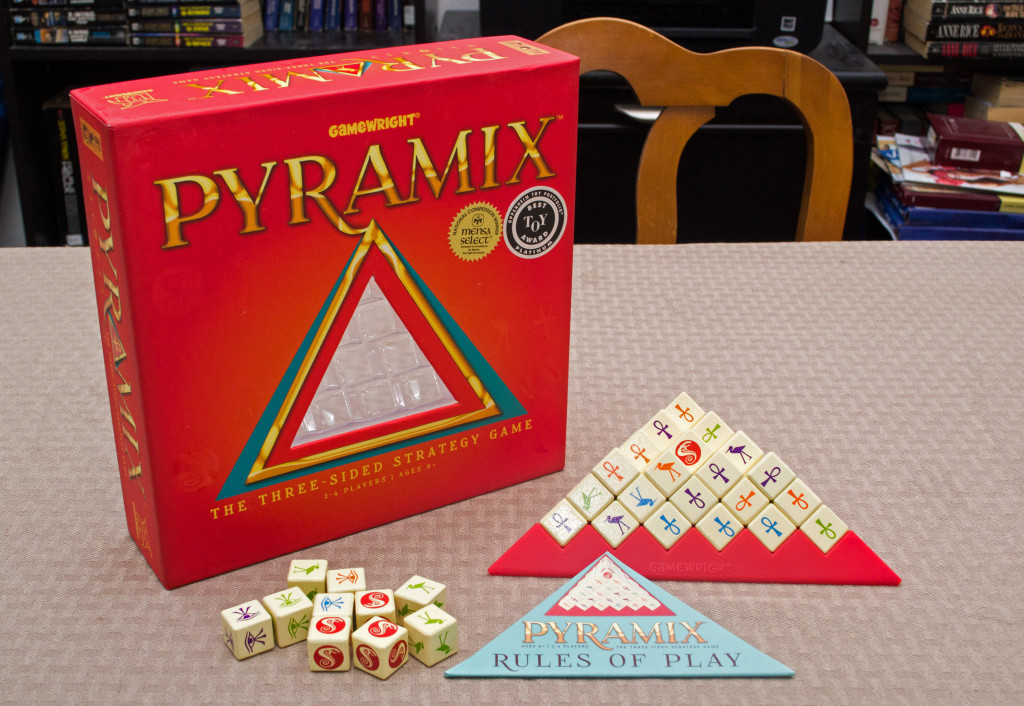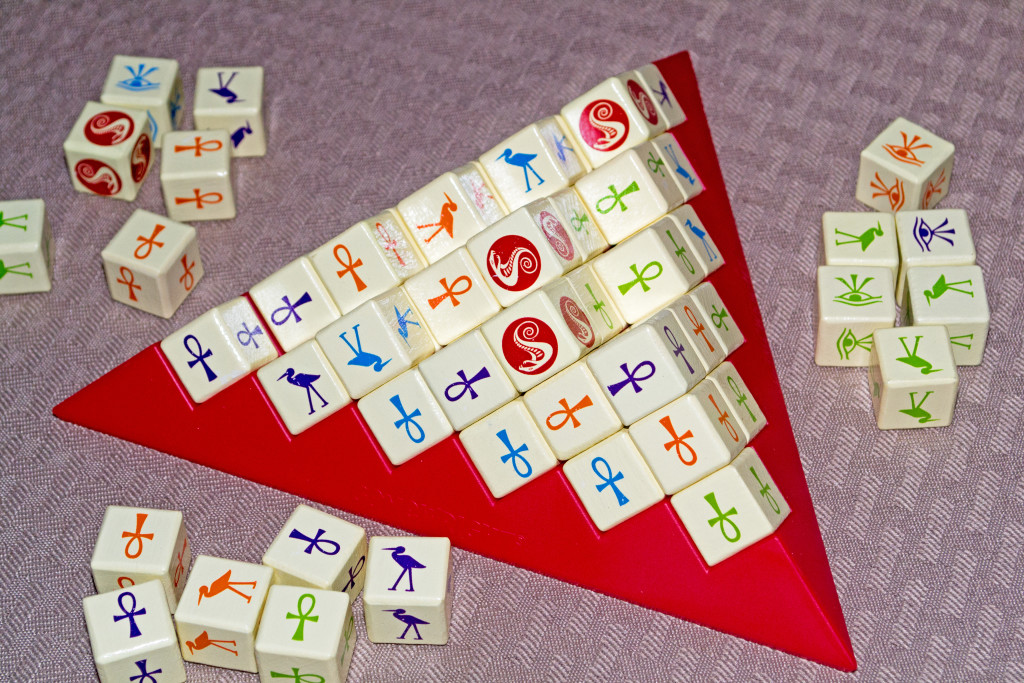Do you fancy yourself to be a good “Mahjong” player? Perhaps you and the family should give “Pyramix” a go. In short, you’ll be tasked with collecting the most cubes of all four colors, though these cubes contain Egyptian symbols that effect how many points they’re actually worth. As players take cubes from the grid, the remaining cubes have the potential to move/slide into different positions…oh, and snakes! Before I go any further, I’d like to extend a quick thank-you to Marketing Coordinator Nora Meiners from Ceaco/Gamewright for providing me with a free press copy for review purposes.
Components
The game includes 56 Cubes and 1 Base Tray. Each cube lists a particular symbol: Ankh (1 point), Crane (2 points), or Eye (3 points) and these will be in one of four colors. There are also four cobra cubes (0 points).
Setup & Gameplay
Players will randomly stack all the cubes onto the base tray to form a pyramid shape. A starting player is selected at random. On a player’s turn, they’ll remove a cube from the grid. The cube must have two or three faces showing. A player cannot take a cube if it permanently exposes the base tray or touches a cobra cube on any flat side. When a player takes a cube, their turn ends.
Play proceeds clockwise until only the bottom layer cubes are showing (remember, you can’t take a cube if it permanently exposes the base tray). At this point, players will check to see if there are any snake cubes left. If there are, they’ll remove both the snake cubes and any cubes that they’re adjacent to. The leftover cubes are awarded to players based on who has the most ankhs of that color (the person with the most orange ankhs gets to take all the orange cubes left on the base, etc.).
Players will then add up the point values of the cubes in their possession (Snake – 0 points, Ankh – 1 point, Crane – 2 point, Eye – 3 point) and the person with the most points, wins!
Editor’s Note: The above doesn’t cover all of the rules found in the manual, but should give you an idea as to how the game is played.
The Review
“Pyramix” is like “Othello” in the sense that it’s easy to learn but strategic enough to keep folks coming back for more. I hesitate to use “difficult to master” as I don’t find “Othello” to be, well, difficult to master (*shrug*). In this case, you’ll always be thinking about the opportunities you’ll be revealing to your opponent every time you take a cube…after all, cubes can only be taken when two or three faces are showing. There’s also the risk of taking a snake cube for zero points…while you’re intentions may be to free up your next couple of moves, you could in turn be giving your opponent the same opportunity.
My favorite aspect of the game lies with how the ankhs work. By themselves, they’re only worth one point. At the end of the game though, you can really rake it in and earn yourself a couple of eyes or cranes if you are the ankh leader of many colors. So, do you take the eyes and cranes and focus on getting immediate points, or do you grab ankhs in the hopes that those bonus cubes at the end of the game will be worth it? Both strategies seem to have merit, based on our play experience.
Overall, “Pyramix” is a pretty fun abstract game. The fact that setup is randomized will keep each game new and exciting. The colorblind may have an issue as there is no way to distinguish the four different colors besides their actual color, but I don’t see why others in the group couldn’t accommodate and help such individuals out by answering their questions. You can find “Pyramix” on Amazon for about twenty bucks (link below) and yes, I do believe it to be worth the purchase.
Final Verdict: 8/10
—


